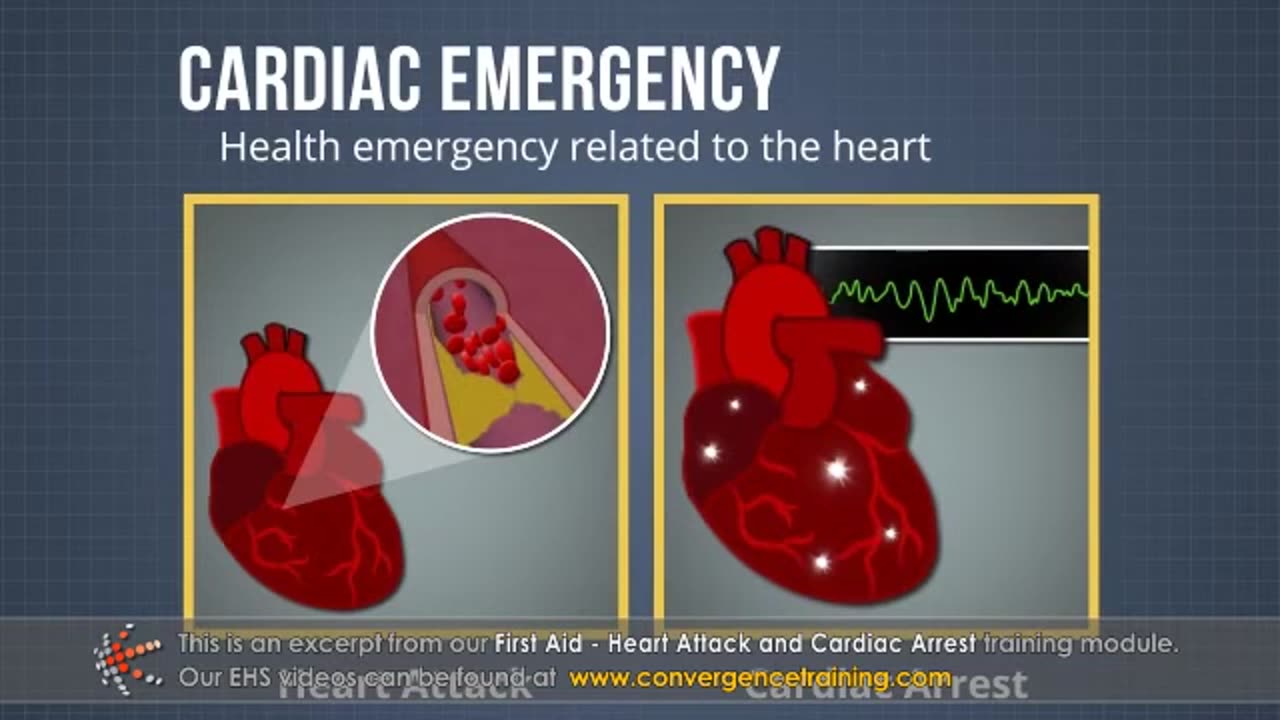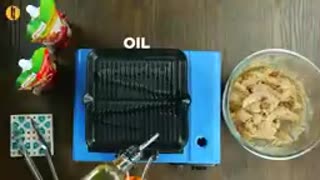Premium Only Content

First Aid - Heart Attack and Cardiac Arrest Training
**First Aid Training for Heart Attack and Cardiac Arrest** is vital for preparing individuals to respond effectively in critical emergencies. Below is a structured guide for training, focusing on recognizing symptoms, providing immediate care, and using lifesaving techniques like CPR and AEDs.
---
## **1. Understanding Heart Attack vs. Cardiac Arrest**
### **Heart Attack**:
- A blockage in blood flow to the heart.
- Symptoms may appear gradually but can lead to cardiac arrest if untreated.
### **Cardiac Arrest**:
- A sudden loss of heart function due to electrical dysfunction.
- Immediate action is required to save the person's life.
---
## **2. Recognizing Symptoms**
### **Heart Attack Symptoms**:
1. Chest discomfort:
- Pressure, tightness, or pain lasting more than a few minutes.
2. Radiating pain:
- Discomfort spreading to arms, back, neck, jaw, or stomach.
3. Shortness of breath:
- Can occur with or without chest pain.
4. Additional signs:
- Cold sweats, nausea, or dizziness.
### **Cardiac Arrest Symptoms**:
1. Sudden collapse.
2. No breathing or gasping.
3. No pulse or signs of circulation.
---
## **3. Immediate Action for Heart Attack**
1. **Call Emergency Services (911 or local number)**:
- Early medical intervention saves lives.
2. **Calm and Position the Person**:
- Help them sit or lie down in a comfortable position.
3. **Loosen Tight Clothing**:
- Improve circulation and comfort.
4. **Administer Aspirin (if appropriate)**:
- If not allergic, give 1 adult aspirin (325 mg) or 2 baby aspirins (81 mg each) to chew.
5. **Monitor Symptoms**:
- Be prepared to perform CPR if the person loses consciousness.
---
## **4. Immediate Action for Cardiac Arrest**
### **A. Perform CPR (Cardiopulmonary Resuscitation)**:
1. **Check Responsiveness**:
- Shake the person gently and shout their name.
2. **Check for Breathing**:
- If no normal breathing is observed, begin CPR immediately.
3. **Start Chest Compressions**:
- Place the heel of one hand on the center of the chest, with the other hand on top.
- Compress at least 2 inches deep at a rate of 100–120 compressions per minute.
- Allow the chest to fully recoil between compressions.
4. **Rescue Breaths (if trained)**:
- After 30 compressions, give 2 rescue breaths.
- Tilt the head back, lift the chin, pinch the nose, and blow into the mouth for 1 second.
### **B. Use an AED (Automated External Defibrillator)**:
1. **Turn on the AED**:
- Follow the voice prompts.
2. **Attach Pads**:
- Place pads on the person's bare chest as indicated on the device.
3. **Clear the Area**:
- Ensure no one is touching the victim.
4. **Deliver Shock** (if advised):
- Press the button to deliver the shock.
- Resume CPR immediately after the shock.
---
## **5. Preventing Common Mistakes**
- **Don’t Delay Calling for Help**:
- Always activate emergency services first.
- **Don’t Assume the Person Will Recover Without Assistance**:
- Every second counts, especially in cardiac arrest.
- **Avoid Excessive Force in CPR**:
- Proper technique is crucial for effectiveness.
---
## **6. Post-Emergency Care**
- **Heart Attack**:
- Reassure the person until professional help arrives.
- Collect relevant medical information (e.g., medications, allergies).
- **Cardiac Arrest**:
- Continue CPR and AED use until help arrives or the person regains consciousness.
---
## **7. Training Exercises**
### **Simulated Scenarios**:
- Practice identifying heart attack and cardiac arrest symptoms in role-play exercises.
- Hands-on practice with CPR mannequins for chest compressions and rescue breaths.
- AED operation using training devices.
### **Realistic Timing Drills**:
- Emphasize rapid response from recognition to CPR initiation (within 1–2 minutes).
---
## **8. Understanding Legal Protections**
- **Good Samaritan Laws**:
- Encourage participants to act without fear of legal repercussions for providing emergency care.
---
## **9. Additional Resources**
- **CPR Certification**:
- Encourage participants to become certified through organizations like the Red Cross or American Heart Association.
- **First Aid Kit Familiarization**:
- Highlight the importance of having aspirin and other essentials available.
---
### **Key Takeaways**
1. **Recognize symptoms early** and act quickly.
2. **Call for help** before starting first aid.
3. **Perform CPR and use an AED** if needed.
4. **Stay calm** and provide continuous care until help arrives.
Would you like visual aids, printable guides, or further explanation of any specific step?
-
 1:35
1:35
HSESafetyInformation
15 days agoMutton Chops two ways- baked & grilled Recipe by Food Fusion (Eid Recipe)
49 -
 2:21:43
2:21:43
The White House
10 hours agoPresident Trump Addresses Joint Session of Congress, March 4, 2025
250K82 -
 2:35:06
2:35:06
Redacted News
6 hours agoLIVE: Renewal of the American Dream | Donald Trump Addresses Joint Session of Congress | Redacted
103K99 -
 2:42:56
2:42:56
vivafrei
13 hours agoDonald Trump to Address Congress! Viva Frei LIVE WITH COMMENTARY!
142K55 -
 3:39:44
3:39:44
The Charlie Kirk Show
6 hours agoTHOUGHTCRIME - The Renewal of the American Dream Speech Special
194K68 -
 1:19:05
1:19:05
Kim Iversen
9 hours agoRFK Jr: Antisemitism Is a 'Health Threat' | Pam Bondi: Epstein Files Will Be Redacted For National Security??!
108K143 -
 2:39:05
2:39:05
Candace Show Podcast
8 hours agoWatch With Me: President Trump’s Address To Congress
122K134 -
 4:09:03
4:09:03
Benny Johnson
12 hours ago🚨President Trump's State of the Union Speech LIVE Right Now! We're INSIDE US Capitol, Special Guests
286K276 -
 13:09:41
13:09:41
Barry Cunningham
1 day agoPRESIDENT TRUMP SPEECH ADDRESS TO JOINT SESSION OF CONGRESS | INTERVIEWS ALL DAY!
100K54 -
 3:45:29
3:45:29
Drew Hernandez
1 day agoWATCH PARTY: PRESIDENT TRUMP'S JOINT ADDRESS TO CONGRESS
62.2K172